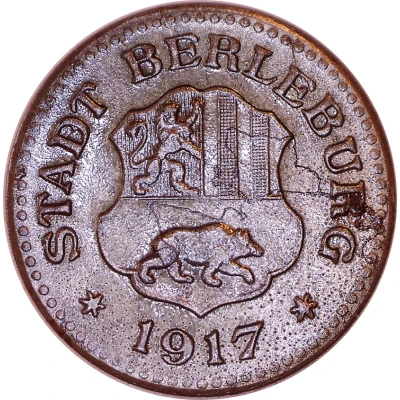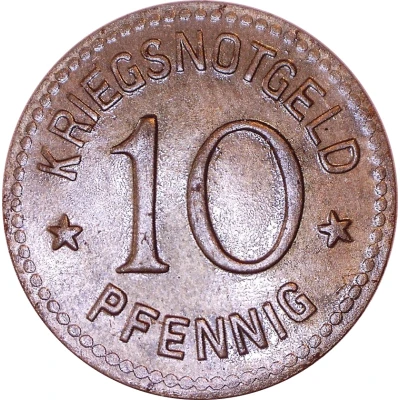


© T. R. Aikins
10 Pfennigs - Berleburg
1917 year| Iron | 2.37 g | 20.0 mm |
| Issuer | City of Berleburg (Prussian province of Westphalia) |
|---|---|
| Emperor | William II (Wilhelm II) (1888-1918) |
| Type | Standard circulation coin |
| Year | 1917 |
| Value | 10 Pfennigs (10 Pfennige) (0.10) |
| Currency | Mark (1914-1924) |
| Composition | Iron |
| Weight | 2.37 g |
| Diameter | 20.0 mm |
| Shape | Round |
| Technique | Milled |
| Orientation | Medal alignment ↑↑ |
| Demonetized | Yes |
| Updated | 2024-10-04 |
| Numista | N#67299 |
|---|---|
| Rarity index | 68% |
Reverse
Pearl rim, legend surrounding denomination centered
Script: Latin
Lettering:
KRIEGSNOTGELD
10
★ PFENNIG ★
Edge
Plain
Comment
Issuing agency: [Stadt, Westfalen].Interesting fact
One interesting fact about the 10 Pfennigs - Berleburg 1917 coin is that it was issued during a time of economic turmoil in Germany. The country was facing severe inflation, and the value of the German mark had dropped significantly. In response, the government introduced a new currency, the "Notgeld," which included coins like the 10 Pfennigs - Berleburg 1917. These coins were made of iron, which was a cheaper alternative to traditional metals like silver or gold, and were designed to be used as small change. Despite their humble origins, these coins have become sought-after collectibles among numismatists today.